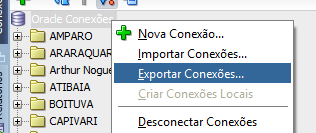Understanding Your Identity in Linux Using id, whoami, and groups
Introduction I’m continuing my 30-Day Linux Challenge as part of my preparation for the RHCSA exam and today I’m focusing on something super simple; yet incredibly useful in any Linux environment: checking who you are in the system. In Linux, knowing which user you are, which groups you belong to and what permissions that gives you is the first step to understanding your access and control. That’s where commands like id, whoami, and groups come in. These might seem basic at first glance but they’re powerful tools, especially when you’re troubleshooting permissions or setting up access for teams. Index What Do These Commands Do Real World Use Cases Examples in Action Helpful Tips Industry Insight RHCSA Relevance Quick Summary

Introduction
I’m continuing my 30-Day Linux Challenge as part of my preparation for the RHCSA exam and today I’m focusing on something super simple; yet incredibly useful in any Linux environment: checking who you are in the system.
In Linux, knowing which user you are, which groups you belong to and what permissions that gives you is the first step to understanding your access and control. That’s where commands like id, whoami, and groups come in.
These might seem basic at first glance but they’re powerful tools, especially when you’re troubleshooting permissions or setting up access for teams.
Index
- What Do These Commands Do
- Real World Use Cases
- Examples in Action
- Helpful Tips
- Industry Insight
- RHCSA Relevance
- Quick Summary































![[Free Webinar] Guide to Securing Your Entire Identity Lifecycle Against AI-Powered Threats](https://blogger.googleusercontent.com/img/b/R29vZ2xl/AVvXsEjqbZf4bsDp6ei3fmQ8swm7GB5XoRrhZSFE7ZNhRLFO49KlmdgpIDCZWMSv7rydpEShIrNb9crnH5p6mFZbURzO5HC9I4RlzJazBBw5aHOTmI38sqiZIWPldRqut4bTgegipjOk5VgktVOwCKF_ncLeBX-pMTO_GMVMfbzZbf8eAj21V04y_NiOaSApGkM/s1600/webinar-play.jpg?#)






































































































































![[The AI Show Episode 145]: OpenAI Releases o3 and o4-mini, AI Is Causing “Quiet Layoffs,” Executive Order on Youth AI Education & GPT-4o’s Controversial Update](https://www.marketingaiinstitute.com/hubfs/ep%20145%20cover.png)













































































































































































































































































































































































![Google Home app fixes bug that repeatedly asked to ‘Set up Nest Cam features’ for Nest Hub Max [U]](https://i0.wp.com/9to5google.com/wp-content/uploads/sites/4/2022/08/youtube-premium-music-nest-hub-max.jpg?resize=1200%2C628&quality=82&strip=all&ssl=1)













![New Hands-On iPhone 17 Dummy Video Shows Off Ultra-Thin Air Model, Updated Pro Designs [Video]](https://www.iclarified.com/images/news/97171/97171/97171-640.jpg)
![Apple Shares Trailer for First Immersive Feature Film 'Bono: Stories of Surrender' [Video]](https://www.iclarified.com/images/news/97168/97168/97168-640.jpg)





































































































